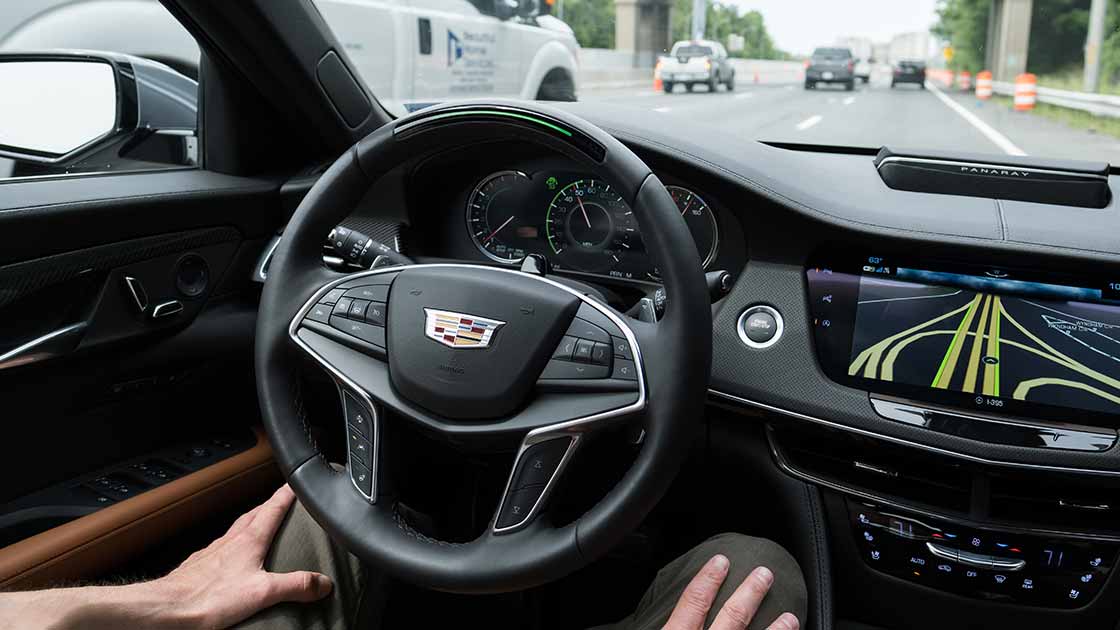Consumers want safeguards with partial automation
June 23, 2022

Drivers prefer partial automation that comes with appropriate safeguards, a new survey conducted by the Insurance Institute for Highway Safety shows.
“Automakers often assume that drivers want as much technology as they can get in their vehicles,” says Alexandra Mueller, the survey’s primary designer. “But few studies have examined actual consumer opinions about partial driving automation.”
To help fill that gap, IIHS researchers conducted a nationwide survey of more than 1,000 drivers that focused on three common features: lane centering, automated lane changing and driver monitoring.
Most partial automation systems are designed to assist with highway driving. Lane centering continuously adjusts the steering to keep the vehicle in the middle of the travel lane, while adaptive cruise control manages the vehicle’s speed and distance from vehicles ahead. Some systems also have an automated lane changing feature, which enables the vehicle to change lanes without the driver needing to steer.
Partial automation still can’t handle many relatively common situations. Thus, systems need to monitor the driver to help ensure they remain ready to intervene if something goes wrong. Most use sensors in the steering wheel or driver-facing cameras for this purpose.
The IIHS survey showed that consumer interest in these technologies is strong, but drivers appear to prefer partially automated features that require them to stay engaged in driving, Mueller says.
For example, lane centering and automated lane changing come in “hands-free” versions that allow drivers to take their hands off the steering wheel under certain conditions and “hands-on” versions that require their hands always be on the wheel. More drivers said they would prefer the hands-on version of the features.
Similarly, some versions of automated lane changing give the driver more control than others. With driver-initiated versions, the driver must physically trigger each lane change. With vehicle-initiated versions, the vehicle software determines when to initiate lane changes on its own and does not require the driver to do anything to begin the maneuver. Drivers overwhelmingly preferred the feature to be driver-initiated.
The survey also showed a high level of acceptance of several types of driver monitoring, a fundamental component of the safeguard ratings that IIHS is developing for partial automation systems. Regardless of whether the feature in question allowed hands-free operation or required the driver’s hands to remain on the wheel, a majority of drivers said they would be comfortable with all three driver-monitoring strategies covered in the survey — sensors on the steering wheel, a camera tracking what the driver is doing with their hands, or a camera aimed at their face tracking where they are looking.
“The drivers who were the most comfortable with all types of driver monitoring tended to say they would feel safer knowing that the vehicle was monitoring them to ensure they were using the feature properly,” says Mueller. “That suggests that communicating the safety rationale for monitoring may help to ease consumers’ concerns about privacy or other objections.”
Many drivers agreed that hands-free lane centering would make driving more stressful than the hands-on version. Those who said they would nevertheless prefer hands-free lane centering were the most accepting of all types of driver monitoring. Many of those drivers said that the hands-free feature would make driving safer and more comfortable. However, some of them also expressed an intent to misuse the technology, saying hands-free lane centering would give them more opportunity to do other things while driving. Such responses illustrate consumers’ fuzzy understanding of the limits of partial automation.
Those who preferred hands-on lane centering seemed to feel more strongly about it than those who preferred hands-free. Among the drivers who wanted to use the feature, around two-thirds of those who preferred hands-on lane centering or had no preference which type they used said they would buy a vehicle with a hands-on version, but fewer than half said they would buy a hands-free version. In contrast, more than three-quarters of drivers who preferred hands-free lane centering said they would buy a vehicle with either a hands-on or hands-free version of the feature.
More than half the surveyed drivers said they would be at least somewhat likely to purchase a vehicle with some form of automated lane changing if price was not an issue. Among those who expressed a preference for either driver-initiated or vehicle-initiated automated lane changing, most said they would want a hands-on version — including many who preferred hands-free lane centering.
“It may come as a surprise to some people, but it appears that partially automated features that require the driver’s hands to be on the wheel are actually closer to one-size-fits-all than hands-free designs,” Mueller says.